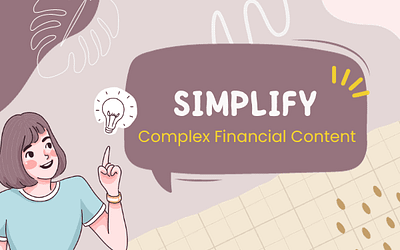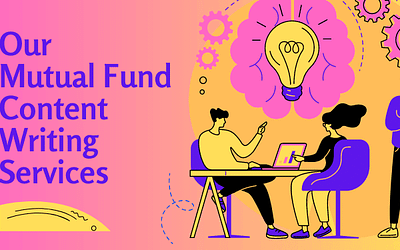Mr. Sharma wanted to start investing for his retirement. However, he needed more information about the products or processes before making a decision. He was curious about doing it through DIY (do-it-yourself), so he surfed through the vast ocean of financial content that was available on the internet.
Some blogs subtly guided him towards a certain product in a straightforward manner, while others tried to convince him through creativity. However, this approach was time-consuming. Mr. Sharma was looking for a simple product comparison that would have saved him the time of comparing every investment product. Thus, he decided to put a pause on his plans.
So, what stopped Mr. Sharma’s journey to decision simplicity?
Let’s explore the reasons why people read financial content and the common hindrances they face on their way to decision simplicity.
1. To learn something new
According to a Hubsopt survey, 33% of blog readers read blogs to learn something new. As a marketer for a BFSI company, you must be writing a lot of financial content for brand discovery. You may have developed content strategies to ensure that financial content consumers stick to your platform for all their questions.
Each reader, with their unique learning preference, would read your content. So, how do you address them all through a single content strategy?
Common mistakes: Ignoring instructional design
While writing on a topic on “Company A invests ₹100 crores in Green Energy Project” you may tend to focus only on SEO, writing non-conversational content and bringing personal biases while ignoring the instructional design.
Solution: Instructional design is vital while creating financial content. The content must align with the learning experience designed for a particular target group. The SEO strategy can also adapt to the learning experience model.
Another solution to creating user-friendly content is to detach from personal biases while forming a content strategy. Say, in our example, Company A has planned to focus on green energy. Would your target audience want to read about green energy and its importance/ limitations or other companies that are focusing on the same?
You need to ask this question to your audience, not yourself.
An easy way to do this is to test your content only with your target audience. Closed user group testing or eliminating non-target groups for initial content reviews and feedback can also help.
2. To find solutions to a problem
Readers also switch to blogs to find solutions to their problems. While writing a blog, you may tend to focus on providing information or guiding your readers towards a particular topic. However, solution-based content must be short, close-ended and more sensitive or empathetic.
Common mistakes: Dumping information
In a blog on Benefits and Limitations of Green Energy Businesses in India, you may tend to provide both information and solutions and add in your personal biases.
Solutions: If readers are concerned about the impact of a project on a company’s business, they might have already read what the recent company initiative is about. They want personalised content that might focus on the implications of the corporate action and not the action itself. Here, the expectation of the reader is higher than in the previous situation.
Again, would the reader want to learn about the technical aspects of a Green Energy Business or how different businesses domestically or globally involved in it are doing? Again, ask your audience, not yourself.
3. To reassure them that they are on the correct path
Whether an investor is going DIY or seeking advice from an investment advisor, the reviews, revisits and readjustments are crucial.
Common mistakes: Providing the same content for all the three purposes mentioned above, along with the basics.
For instance, the reader wants to read about Expert views on Company A’s Green Energy move. Here, the reader has either chosen or added the stock to their wishlist. The reader might also be aware of the Green Energy Project, its pros and cons, and other technical details associated with it. The objective here is to confirm if the previously gained knowledge about the newly learned topic and problem-solution is correct.
Solutions: The content can be action-oriented, with sophisticated information that might only come through experience. Here, the marketers can remember that the expectations of the reader are the highest compared to the previous two situations.
Therefore, before forming a content strategy, marketers must understand their readers’ purposes. They can analyse the purpose to which a topic would appeal and the resulting target group they would cater. With this, marketers in the BFSI space can gauge their readers’ preferences and increase decision simplicity and user stickiness to their brands.
Reach out to us now to develop a customised content strategy for your target audience.




